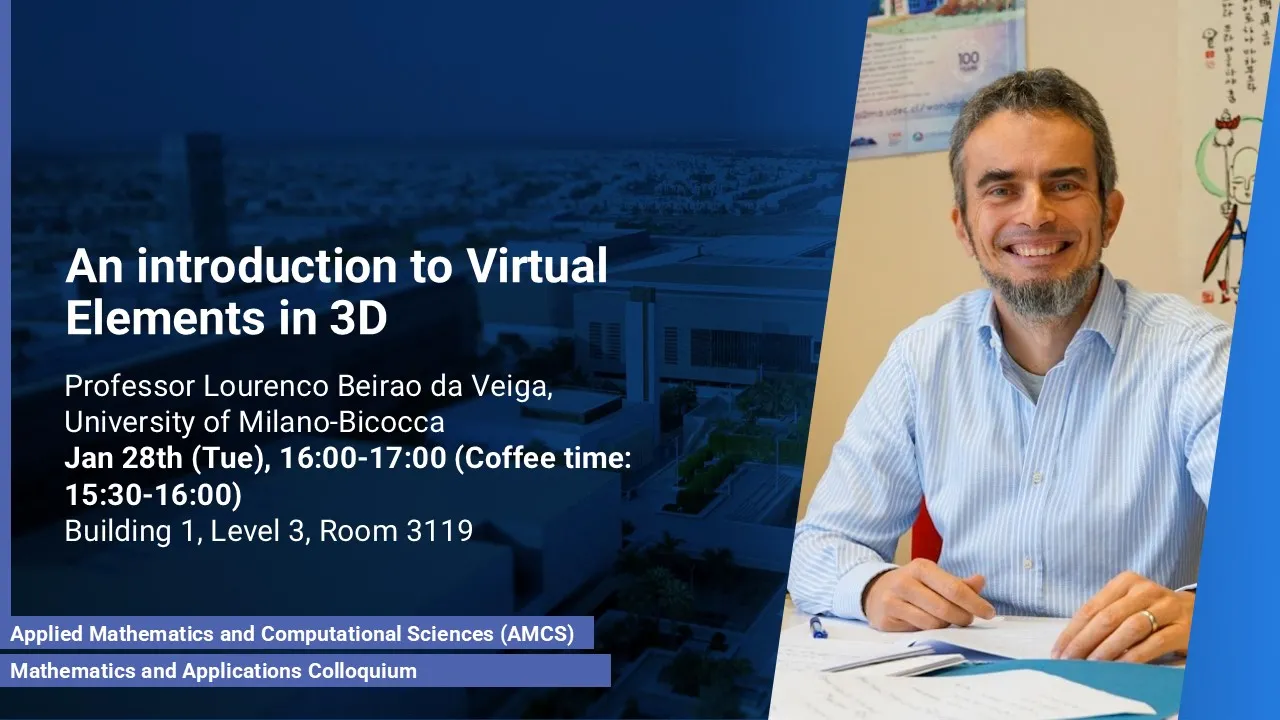
An introduction to Virtual Elements in 3D
The Virtual Element Method (VEM), is a very recent technology introduced in [1] for the discretization of partial differential equations, that has shared a good success in recent years. The VEM can be interpreted as a generalization of the Finite Element Method that allows to use general polygonal and polyhedral meshes, still keeping the same coding complexity and allowing for arbitrary degree of accuracy. The Virtual Element Method makes use of local functions that are not necessarily polynomials and are defined in an implicit way. Nevertheless, by a wise choice of the degrees of freedom and introducing a novel construction of the associated stiffness matrixes, the VEM avoids the explicit integration of such shape functions.
Overview
In addition to the possibility to handle general polytopal meshes, the flexibility of the above construction yields other interesting properties with respect to more standard Galerkin methods (for instance, the VEM easily allows to build discrete spaces of arbitrary $C^k$ regularity, or to satisfy exactly the divergence-free constraint for incompressible fluids).
The present talk is an introduction to the VEM, aiming at showing the main ideas of the method. We consider for simplicity a simple elliptic model problem (that is pure diffusion with variable coefficients [2]) but set ourselves in the more involved 3D setting [3]. In the first part we introduce the adopted Virtual Element space and the associated degrees of freedom, first by addressing the faces of the polyhedrons (i.e. polygons) and then building the space in the full volumes. We then describe the construction of the discrete bilinear form and the ensuing discretization of the problem. Furthermore, we show a set of theoretical and numerical results. In the very final part, we will give a glance at more involved problems, such as magnetostatics (mixed problem with more complex spaces interacting), Navier-Stokes equation (nonlinear problem in fluids) and large deformation elasticity (nonlinear problem in solids).
[1] L. Beirao da Veiga, F. Brezzi, A. Cangiani, D. Marini, G. Manzini, A. Russo, Basic principles of virtual element methods. Math. Mod. Meth. Appl. Sci, 23:199-214, 2013.
[2] L. Beirao da Veiga, F. Brezzi, D. Marini, A. Russo. Virtual Element Method for general second-order elliptic problems on polygonal meshes. Math. Mod. Meth. Appl. Sci, 26:729-750, 2016.
[3] L. Beirao da Veiga, F. Dassi, A. Russo. High-order Virtual Element Method on polyhedral meshes. Comp. \& Math. with Appl., 74:1110-1122, 2017.
Presenters
Professor Lourenco Beirao da Veiga, University of Milano-Bicocca
Brief Biography
Lourenco Beirao da Veiga obtained his PhD in Mathematics in Pavia in 2005. After spending 10 years at the Department of Mathematics of the University of Milan, he became Full Professor of Numerical Analysis at the Department of Mathematics and Applications of the University of Milano-Bicocca (since 2015). L. Beirao da Veiga's research focuses on the discretization of partial differential equations, mainly related to problems in solid mechanics, fluid mechanics, and electromagnetism. He has contributed extensively to the development of innovative technologies in this field, such as Mimetic Finite Differences, IsoGeometric Analysis, and Virtual Finite Elements. The latter has been his main area of interest in recent years.
L. Beirao da Veiga won the Lions-Eccomas prize of the ECCOMAS in 2016 and was a Highly Cited author in Mathematics (according to Web of Science) for many years. He won an ERC Grant Consolidator (2016-2021) and more recently a Synergy ERC Grant Consolidator (2024-2029). He is author of more than 100 publications in Numerical Analysis and editor of many international journals in the field.